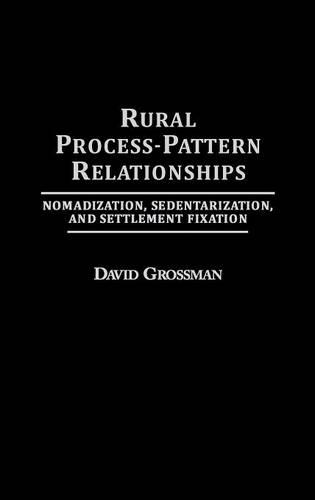
Rural Process-Pattern Relationships: Nomadization, Sedentarization, and Settlement Fixation
(Hardback)
Publishing Details
Rural Process-Pattern Relationships: Nomadization, Sedentarization, and Settlement Fixation
By (Author) David Grossman
Bloomsbury Publishing PLC
Praeger Publishers Inc
19th March 1992
United States
Classifications
Tertiary Education
Non Fiction
Settlement, urban and rural geography
307.72
Physical Properties
Hardback
232
Description
This volume examines the relationships between rural settlement processes and the spatial patterns they product by mapping past and present patterns and tracing the historical processes which generated them. Using the historical records of Palestine (Eretz Israel), David Grossman reviews the settlement processes of bedouins (sedentarization and nomadization), Arab peasants (settlement fixation, migration, and frontier expansion of fallahin), and early Jewish settlers. Past records are traced back to the biblical period, and a survey of the literature dealing with British evidence of rural processes and settlement in medieval times is presented for comparison - sharpening Grossman's particular approach to the subject. The introduction provides a review of the literature and a discussion of the various approaches to the interpretation of rural spatial processes. It evaluates theoretical models and concludes with a simple model functioning as a hypothetical basis for the rest of the book. The following two chapters are devoted to the British colonization process, which, unlike the Palestinian one, can be traced in a fairly uninterrupted manner to its Anglo-Saxon roots. Next are chapters detailing the settlement processes and process patterns in Palestine, concluding with a reexamination of theoretical models in light of empirical evidence.
Reviews
. . . a thoughtful book more suited to graduate seminar than introductory classroom.-Historical Geography
This well-documented work is worthwhile reading for both rural and regional specialists. Grossman is to be commended for his integration of textual and field research. His 26 maps add significantly to the text, although several of the maps should have included more recognizable points of orientation. Rural Process-Pattern Relationships succeeds in identifying the formation process from dispersed settlements to nucleated villages in diverse settings and times, while at the same time acknowledging the many other complex influences at play.-Professional Geographer
." . . a thoughtful book more suited to graduate seminar than introductory classroom."-Historical Geography
"This well-documented work is worthwhile reading for both rural and regional specialists. Grossman is to be commended for his integration of textual and field research. His 26 maps add significantly to the text, although several of the maps should have included more recognizable points of orientation. Rural Process-Pattern Relationships succeeds in identifying the formation process from dispersed settlements to nucleated villages in diverse settings and times, while at the same time acknowledging the many other complex influences at play."-Professional Geographer
Author Bio
DAVID GROSSMAN is Associate Professor of Geography at Bar-Ilan University in Israel. His research studies of rural development and migration in Africa and the West Bank have fostered interest in historical geography and anthropology. Dr. Grossman has authored and edited many books and articles in English and in Hebrew.
